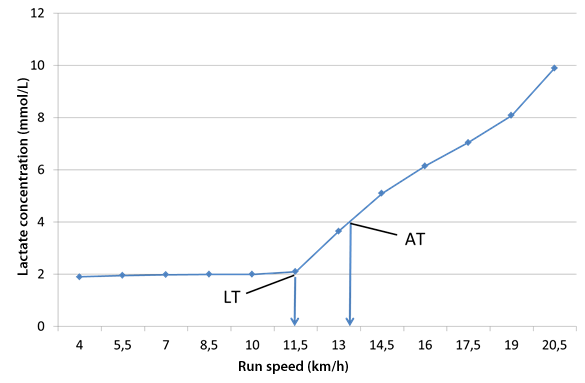Endurance workout

Endurance workouts are intended to improve activity of the heart-vascular system, muscle endurance and management of body weight. In addition to these benefits, endurance workouts significantly improve our mood, since they stimulate the release of neurochemicals associated with a heightened sense of well-being (dopamine, endorphin, and morphine). Endurance workouts also aid in the control of blood sugar levels (specifically Type 2 diabetes). Experts estimate that movement combined with proper nutrition has the potential to decrease the number of patients with Type 2 diabetes by approximately 80%.
Endurance workouts also positively influence the activity of the vegetative nervous system, which is associated with stress. Endurance workouts decrease sympathetic activation, increase vagus activity (producing a lower resting heart rate), and decrease both the variability of heart rate as well as the tendency for dangerous heart arrythmias. As such, endurance workouts play an important role in both preventive and curative approaches to stress.
In endurance workouts, cyclic movements such as walking, running, cycling, and swimming are usually employed. These are referred to as activities in our system. Every activity has its own features which are implemented through the technique of movement. From a recreational point of view, the proper technique is essential to protect against injuries, since many sports injuries are a direct consequence of bad technique. Indeed, proper technique is also important for achieving good results.
From the perspective of technique, different activities have different emphases. In general, activities usually are associated with keeping or transporting energy from one cycle to another (for example, between steps when walking or running). With the use of elastic energy, movement becomes more efficient (smaller consumption of chemical energy to produce the same result). At the same time, the use of elastic energy increases the possibility for injuries, because muscles and tendons are subjected to greater force. Among the endurance-related activities, the most demanding is running, followed by walking. Bicycling and swimming are not associated with inflicting great force on muscles and tendons.
In fitness centers, bikes, elliptical fitness machines, climbers, treadmills and rowing machines all employ different ergometers for endurance. Because these pieces of equipment have very different characteristics, they allow you to adjust for a wide variety of requirements. Overweight or weak people may select sedentary ergometers at the beginning, people with sensitive joints may choose ergometers without punches, and so on.
We use three main methods when training for endurance: continuous training, interval training and fartlek. We determine the load of the activity with each of these methods. We use the term effort to indicate the body's response to the load. The change we want to achieve with the workout depends upon the method.
Continuous workout typically means implementation of an activity with steady intensity and without stopping. Intensity can be determined as a percentage of the maximum oxygen capacity (VO2max), percentage of maximum heart rate, and as mechanical power, for example. An example of continuous training would be 40 minutes of running at an intensity of 70-80% of maximum heart rate.
The interval method implements an activity along with rest. This method involves load intervals, their number, intensity and duration, with breaks for rest in between. We even determine the duration and method of rest break. The rest can be passive (less effective) or active. If it is active, we determine the activity and its intensity, which is implemented during the break. An example of an interval workout would be 10 x 200 meters, where pulse at the end of the interval is 90% of maximum pulse, followed by an active break with slow running or walking. The break lasts until the pulse decreases to 60% of maximum pulse.
Fartlek means running with speed changes. It is similar to interval running but its structure is less defined. Normally we have a basic running speed that we interrupt with faster runs, followed by a somewhat slower pace for rest.
The main focus of endurance workouts is the amount and duration of load. Loads in endurance workouts are divided into ranges of intensity. You can divide the loads based on different criteria that have their own physiological basis. Maximum oxygen capacity (VO2max) is one important indicator. VO2max measures aerobic strength and represents the upper boundary of aerobic capabilities, which is crucial for resilience. Lactate and anaerobic threshold are the most important indicators for long-lasting activities. Anaerobic threshold is the intensity (Figure 1) at which enough oxygen is available for perfect decomposition of energy sources (glucose). At higher intensity, lactate starts to accumulate. When the anaerobic threshold reaches its highest intensity, it is still possible to maintain a stable state for some time. Research indicates the highest anaerobic threshold is achieved when the blood lactate level is 4 mmol/l, although it may vary from individual to individual. Theoretically, highest intensities to lactate threshold can be maintained as long as energy is available. With accumulation of lactate in the blood, the duration of the activity starts to shorten because fatigue occurs sooner. Results of laboratory testing of lactate and anaerobic threshold intensities are presented in Figure 1.

Figure 1. Lactate (LT) and anaerobic (AT) threshold.
For practical purposes, we can correlate these intensities with pulse. Therefore, 85-90% of maximum pulse corresponds approximately to the anaerobic threshold.
Based on effort, workout intensities can be divided into the following zones:
| Very light | 50-60% | of heart reserve |
| Light | 60-70% | of heart reserve |
| Medium | 70-80% | of heart reserve |
| Hard | 80-90% | of heart reserve |
| Maximum | 90-100% | of heart reserve |
However, the upper classification of intensity does not provide guidance for designing the workout itself. By associating the LT curve (Figure 1) with heart rate, we can define zones of intensity which are more meaningful for the workout:
| Renovation | 55-60% | of maximum pulse |
| Endurance | 66-75% | of maximum pulse |
| Lactate threshold | 76-80% | of maximum pulse |
| Anaerobic threshold | 81-90% | of maximum pulse |
| Super threshold | 91-93% | of maximum pulse |
| Anaerobic endurance | 94-98% | of maximum pulse |
| Anaerobic capacity | 98-100% | of maximum pulse |
Intensity renovation is used primarily for regeneration after a hard workout with a lot of lactic acid buildup or exhaustion of glycogen (in conjunction with nutrition). Intensity renovation serves as a break between intervals in interval workouts or for slow long distances.
Intensity endurance is used for long continuous runs as a basic workout for aerobic endurance.
Intensity lactate threshold is used for tempo runs in the preparation period and as a preliminary stage to anaerobic threshold.
Intensity anaerobic threshold is used for interval runs with a work:rest ratio between 3:1 and 4:1. In combination with runs at higher intensity, intensity anaerobic threshold is also used for consumption of lactic acid.
Intensity super threshold is used for interval runs that are on the limit of accumulating lactic acid. It can also be used for running uphill.
Intensity anaerobic endurance is used for interval runs where increased acidification of muscles already occurs. The typical work:rest ratio is 1:1. An example would be 20 seconds of sprint and 20 seconds of rest.
Intensity anaerobic capacity is used for achieving maximum acidification of muscles. It is implemented in the form of intervals–sprints. An example is 4 - 5 x 300 meters with 70% of maximum speed/strength and 1 minute of break between intervals.